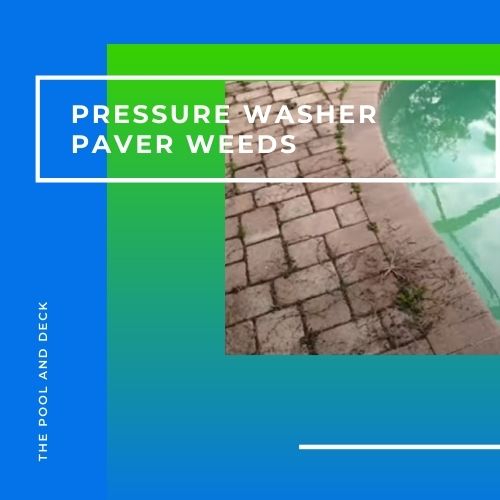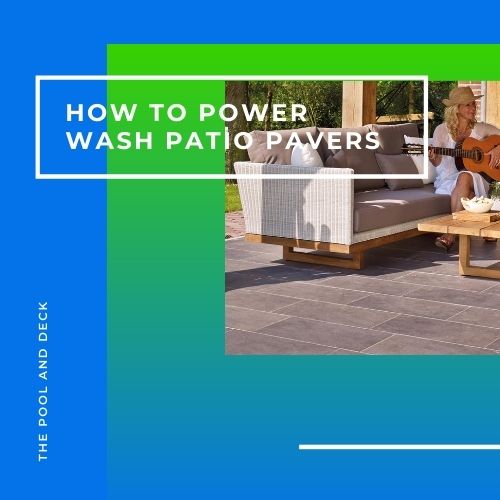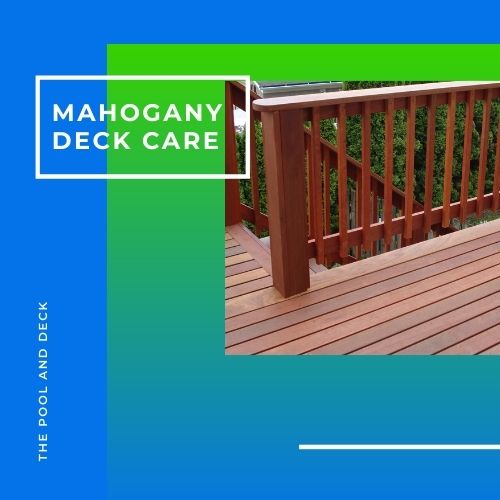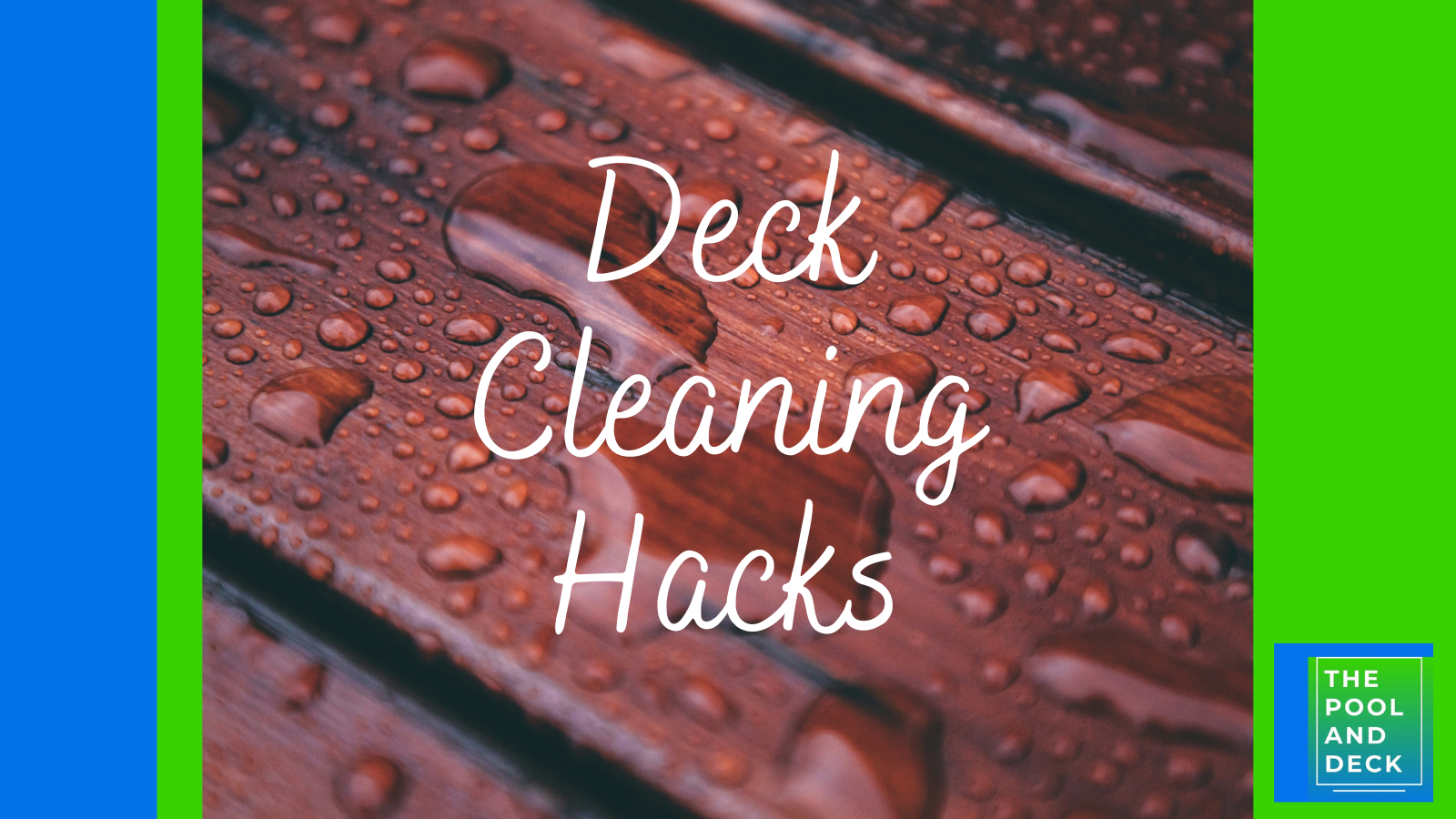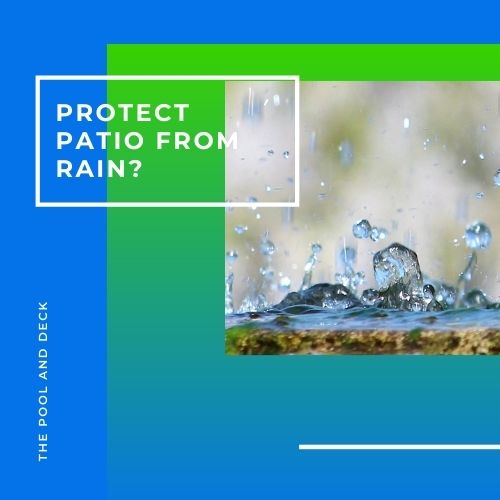How To Waterproof a Pool Deck? (The Best Ways)
thepoolanddeck.com is a participant in the Amazon Services LLC Associates Program, an affiliate advertising program designed to provide a means for sites to earn advertising fees by advertising and linking to Amazon.com . The website is also an affiliate of a few other brands. The affiliate links never increase your purchase price. We do appreciate your support. Thank you very much!
Table of Contents
How Do You Waterproof a Pool Deck?
The pool deck is what makes a backyard pool attractive and a fun place to hang out. But no matter what material you choose for the pool deck, they all have their weaknesses. Wood is hygroscopic, concrete is porous and even natural stone pavers are not impervious to water. So, how do you waterproof a pool deck?
To waterproof a pool deck, you need to seal it. You must use a penetrating sealer. You can complement it with a topical sealer, in some cases. Waterproof membrane between the grade and decking can be very helpful too!
The outdoor pool deck is continuously exposed to water. The deck is always getting wet from splashes from the pool. Swimmers get out of the pool, dripping water as they run or walk on the deck. Then there is rain, condensation or even snow.
When water penetrates into pool decking it can result in a host of problems:
- Wet wood can warp, rot, soften and disintegrate
- Concrete will lose strength, cracks can expand and rebars can rust
- Natural stone pavers rich in calcite can get corroded
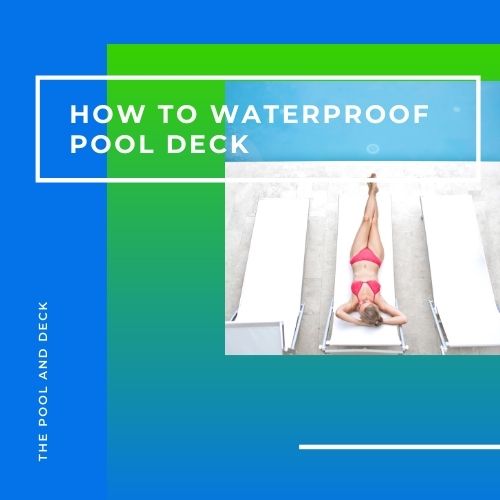
It is extremely important that you waterproof your pool deck to protect it from stains, water penetration and early deterioration. In this post I am going to tell you why and how to waterproof different types of pool decks.
How Do You Waterproof a Wood Pool Deck?
Wood is a great decking material. It has natural beauty & warmth and does not get too hot in the sun. But real wood will absorb water almost like a sponge as it is porous and hygroscopic.
Wet wood with ample supplies of cellulose is immensely attractive to termites and wood boring beetles. Wet wood tends to warp, rot & disintegrate. Waterproof your wood pool deck by sealing it.
Here is how to seal a wood deck:
- Wait for a month after installing the deck before sealing
- Use a waterproof or water repellent wood sealer. This is not the same as a wood stain or deck paint. Most stains & deck paints are not really waterproof
- Wash & sand the deck before applying the wood sealer
- Wood sealer can be applied just like paint using a brush, roller or spray
- Apply 2 coats, with a gap of 24 hours between coats, in case of a new deck. If resealing, one coat will be enough
Thompson’s Waterseal Clear Water-Based Waterproofer Wood Protector even exceeds Industry Standard ASTM D-4446 for Waterproofing Wood. It is exceptionally good at
- Preventing Water Damage
- Maintaining Wood’s Natural Color
- Resisting Mildew and UV Damage
How Do You Waterproof a Concrete Deck?
Concrete pool decks are most common as concrete is easy to pour into a slab on grade, is relatively cheap and is durable. But is concrete really durable? Yes provided it is protected from water getting into its pores.
Concrete is made up of sand & aggregates in a slurry of cement & water. Once the concrete has been poured the curing process begins. The water reacts with cement to form a crystalline net that bonds the aggregates. Evaporating water leaves behind pores in what looks like solid rock.
When water gets into the pores, the concrete can deteriorate and lose strength because of:
- Scaling: Water within the concrete expands and contracts as the temperature changes. This puts physical pressure on the cement causing it to break down into dust.
- Rebar Rusting: Water seepage into the concrete pores can also result in the corrosion of the steel reinforcement bars and a reduction in the tensile strength of the concrete.
Waterproof your concrete pool deck by sealing it. You should also reseal it every 1 -3 years.
Here is how to seal a concrete deck:
- Freshly poured concrete takes 4 weeks to fully cure. Seal only after the concrete pool deck has fully cured
- Concrete sealers can be penetrative or topical. You must use a penetrative sealer to block the concrete pores. In some cases, such as stamped concrete, a topical sealer can also be applied later
- Wash the concrete deck with soap water to remove dust, dirt & grime. Remove stains. Check out my earlier post The Best Way To Clean A Concrete Pool Deck
- Make sure the concrete deck is dry before applying the penetrating concrete sealer
- Apply two coats, wet on wet with a pump spray
I recommend Foundation Armor SX5000 Water Based Silane Siloxane Penetrating Concrete Sealer.
The Armor SX5000 WB is a water-based Department of Transportation approved Silane-Siloxane penetrating concrete sealer. It penetrates deep into the substrate where it chemically reacts to form a hydrophobic barrier within the pores
This reduces the absorption of water by up to 95%. It protects concrete, from within, without changing the look or feel of the surface.
For maximum effectiveness, the vapor barrier should be in direct contact with the underside of the concrete slab.
Waterproofing Membrane
A concrete pool deck is essentially a concrete slab on grade. Ground water or moisture can move up into the concrete due to capillary action. To prevent this you must use a waterproofing (aka vapor barrier) membrane.
Of course this can only be done at the time of pouring the concrete pool deck.
The vapor barrier should be laid out after all the ground preparation has been completed. Smooth out the base with a thin layer of sand, if required, so that there is no risk of the vapor barrier being punctured by sharp rock or gravel. Pour the concrete slurry directly onto the waterproof membrane.
How Do You Waterproof Natural Stone?
If you have gone for a classic yet luxurious look for your pool deck, you may have used natural stone pavers. Travertine, limestone, sandstone and slate are quite popular. Marble and granite are used for the ultra-lux ambiance.
Elegant they may be, but natural stone pavers have pores too. Moreover the pavers are laid out on a Travertine, limestone and sandstone.
Some manufactures pre-seal their pavers to make your job easier. Even if they have not been pre-sealed, sealing natural stone pavers is not difficult.
Here is how to seal natural stone:
- If laying a new paver deck on grade, use polymeric sand between the paver joints
- Wait for a few days before sealing to give the pavers time to settle down
- If resealing, you can check the effectiveness of the earlier sealer by sprinkling a few drops of water on the paver surface. If the drops get absorbed and do not bead up, it sure is time to reseal
- Clean the deck. You can check out one of my earlier posts, You Need To Clean A Limestone Pool Deck This Way! Or How To Clean A Travertine Pool Deck? (7 Helpful Tips!)
- Apply two coats, wet on wet, of a penetrating sealer designed for natural stone using a
A good impregnating sealer such as Miracle Sealants 511QT6 511 Impregnator Sealer will last 1-3 years on a natural stone pool deck. The actual life depends on the texture, foot traffic and even the strength of the power wash.
Thank you very much for reading the post. I do hope you found it informative and helpful.


